V2ray is a network tool that can be used to bypass network restrictions and gain access to blocked websites and content. For more information on V2Ray, refer to this Doprax article.
On Doprax, there are functionalities and facilities in both the container platform and also virtual machines for v2ray. Check out the app market for VMs.
Our goal in this tutorial is how to run v2ray on Doprax, deploy a server on Doprax and use this VPN server to access the internet from anywhere in the world. To be able to do this, there are three stages we must go through first. In this tutorial we’ll make use of this VPN server from Doprax on an Android device to demonstrate this Doprax feature.
Stage 1: Deploying V2Ray Server on Doprax
There are two ways you can run v2ray on Doprax. One way is to use the app space feature in Doprax to run v2ray and the other way is to run v2ray panels, v2ray instances plus a GUI for easier management of multiple users. The v2ray panels need virtual machines to run.
Let’s make use of the ‘App space’ feature in Doprax to run v2ray server from the app market because it’s more suited for personal use.
Creating an App Space
Go to your Doprax dashboard. Click ‘Container platform’ dropdown from your dashboard left sidebar.
Select the ‘Create new app space’ option. Input a name for your app space e.g “V2ray Doprax Deployment”, select a location, and the storage size that suits you.
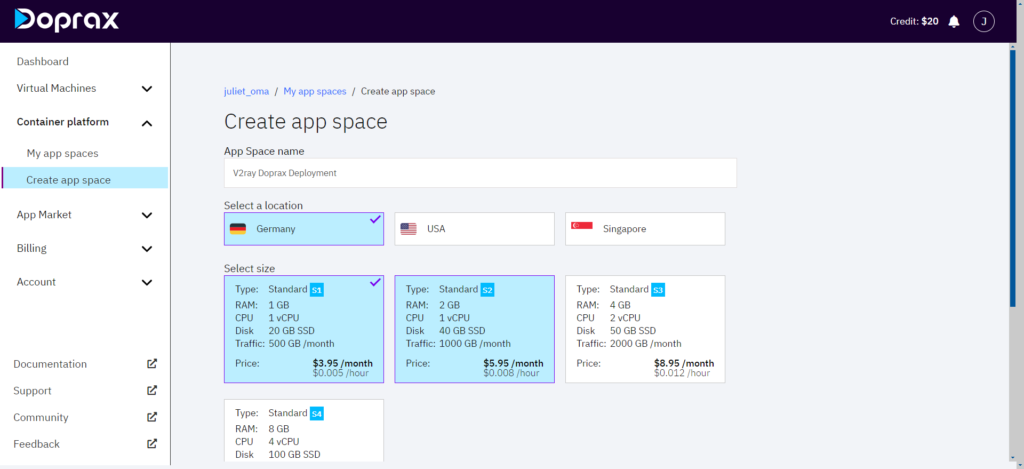
Click the ‘create app space’ button.
V2Ray for Doprax in the App Market
Once you’ve created an app space, visit this link to go directly to the v2ray app in the app market. If you just recently created an app space for the purpose of this v2ray server deployment on Doprax, click on that app space in the “Choose an app space” section.
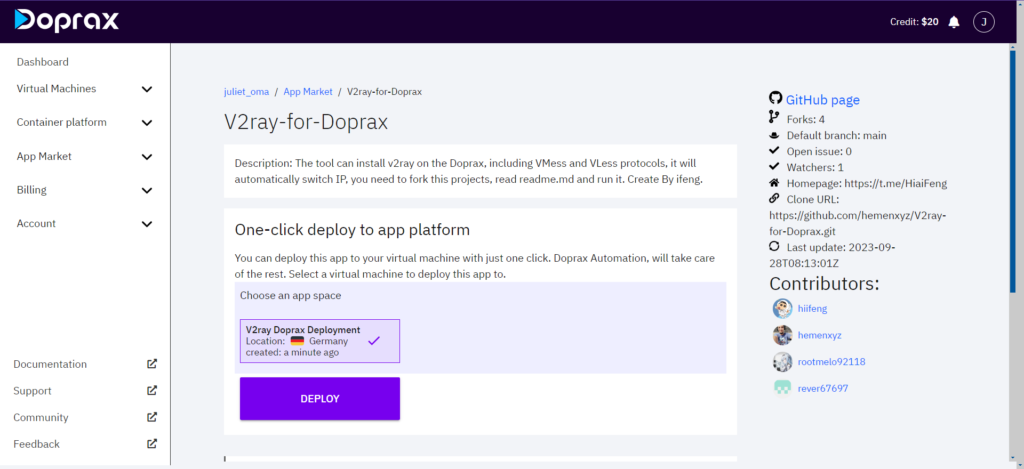
Then click the ‘Deploy’ button. This will create an app and template successfully and open up a new page with a log terminal underneath it.
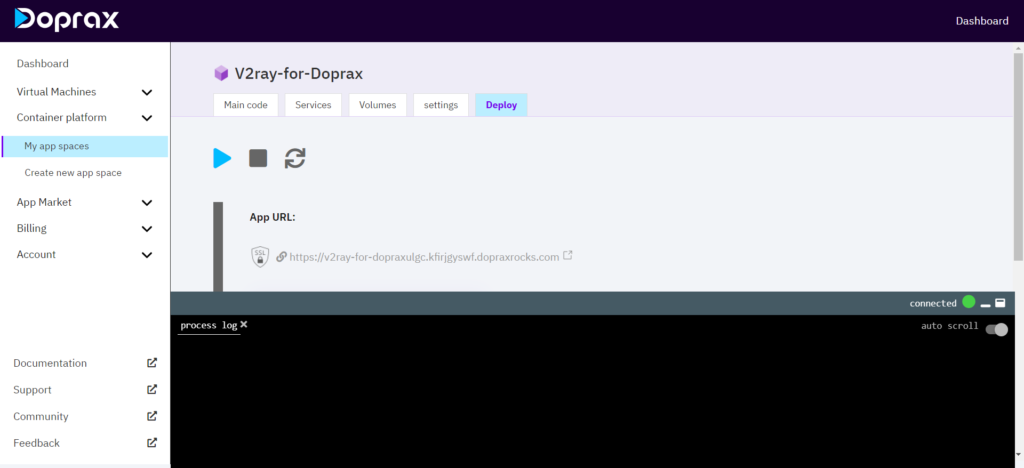
Click on the blue play icon at the top of the page to start up the server. Pay attention to the logs in the terminal to see if it was successfully built. If it was, it should show a message in the terminal reading “Main is now running”

On that same page, in the Main box, click the “Logs” button. This will run the main log in the terminal underneath. In this terminal with logs output, scroll to the very top and you’ll be provided with your own configuration link.
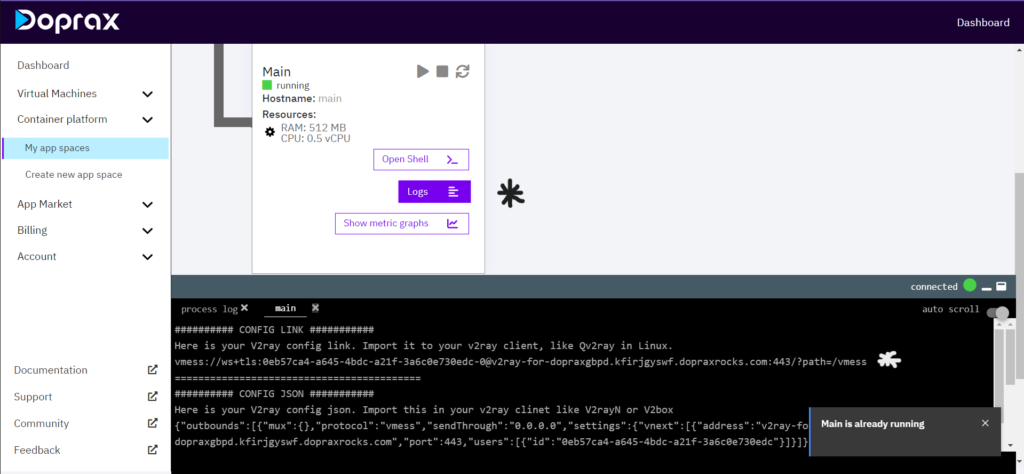
Take note of the asterisks(*) in the image above. The first one is where the “Log” button is located at, while the second one is where the configuration link will be provided. Copy out that configuration link as that is the server address that will be used in any client app.
With that you’re done for stage one. You’ve successfully deployed v2Ray server on Doprax. The next step will be to import that link into a v2ray client depending on the Operating System of the mobile phone you intend to make use of.
For Android devices, there are some v2ray clients like e-V2ray and v2rayNG available for use. This tutorial will guide you on how to use the”v2rayNG” app.
Stage 2: Installing the V2ray Client App on an Android Device
Download the v2rayNG app from Google Play Store on your mobile phone by clicking this link. It will open up the app in Google play, click ‘Install’ and wait for it to finish installing. Below is an image of the v2rayNG logo.
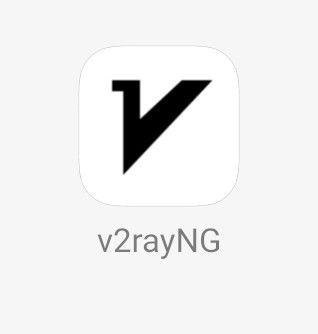
After a successful installation, open up the app. The v2rayNG app has a very simple interface and is easy to navigate. Click on the plus ‘+’ sign at the top right hand corner of your app. It will open up options to pick from to configure your VPN server.
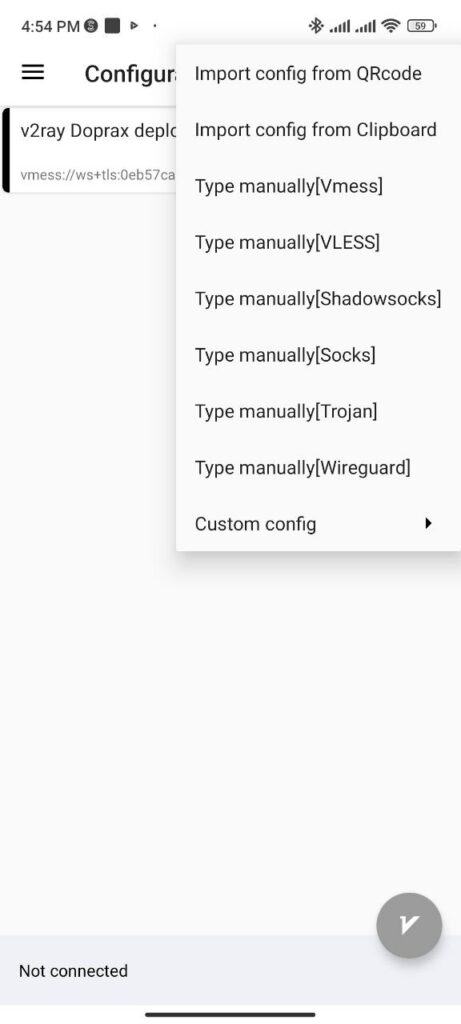
Since the configuration link provided by Doprax starts with vmess, select the “Type manually[Vmess]” option from the dropdown. It will open up the page where your configuration settings for Vmess server is and that is where you’ll have to input some details for your server.
Stage 3: Importing Configuration Link into the V2ray Client
Now it’s time to import the configuration link you copied from the log terminal of your Doprax dashboard in stage 1. The link is the v2ray server you deployed on Doprax and it starts with a “vmess…..” string.
Adding a Server
When the server configuration file screen opens up, enter a server address, remarks, port, and id.
In the ‘remarks’ input field, enter a remark e.g, v2ray Doprax deployment. For the ‘Address’ input field, enter the vmess config link you copied.
Leave the default port number ‘443’ as the port number in the ‘port’ input field. Input any random ID number or a combination of strings and numbers as ID in the ‘id’ field. Those are the 4 fields that need to be filled to add a server.
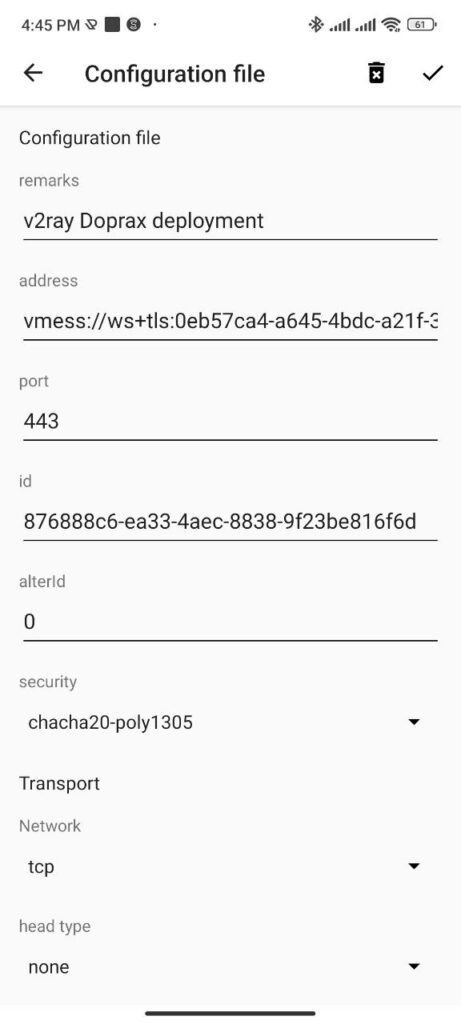
Click on the tick (✓) sign at the top right corner of that page and it will be added as a server on the main page of the app.
Connecting to the server
After successfully adding the server and it displays on the app’s main page, you can activate it by clicking the v2rayNG icon that is inside a circular gray background, located at the bottom right corner of the page. Once the server is activated, that icon’s color will change to a bright orange color meaning the VPN is connected and ready to be used.
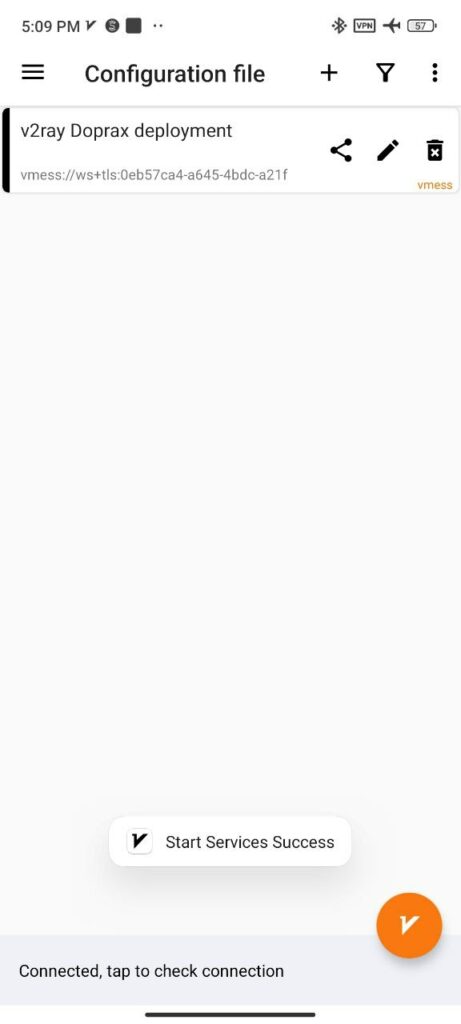
You’ll also notice the VPN bar at the top of your phone screen near the battery bar. Now you are ready to access the internet from anywhere without any restrictions and you access restricted sites.
To check if this works properly, visit any site on your browser, like www.doprax.com. If the site loads, it means the VPN server is working. To stop using the v2rayN server to access the internet, go to your v2rayNG mobile app, click on that v2rayNG icon at the bottom right that you clicked when you connected the server. This will disconnect your device from the VPN service.
And that’s it! You’ve been able to successfully create an app space for v2ray server deployment, deploy it on Doprax, import the config link on a v2ray client for Android, add the server to the configuration settings, and connect to it in order to access the internet.
thanks very much
very good